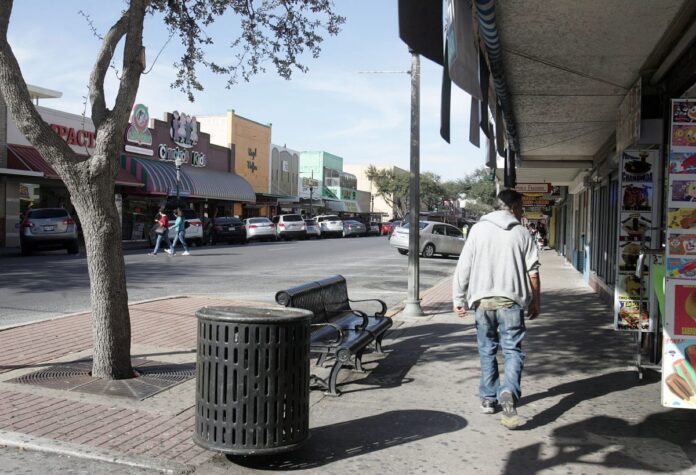
McALLEN — Even before the 1976 opening of La Plaza Mall, Mexican shoppers have been the lifeblood of the Rio Grande Valley’s economy.
Strips of downtown McAllen provide shopping outlets for Mexican shoppers, and the parking lots at La Plaza in McAllen and the RGV Premium Outlets in Mercedes have traditionally been dotted with Mexican license plates.
McAllen, a shopping hub for South Texas and northern Mexico, pulls in nearly 40 percent of its yearly revenue from sales tax. But the city has had declining sales tax revenue for the last two years.
The declining sales tax revenues in McAllen are a microcosm of the issue across the region, which is why Futuro RGV hosted a panel Tuesday on the impact of Mexican shoppers on the Valley economy.
With the holiday season looming, McAllen City Manager Roel “Roy” Rodriguez, a panelist, said he’s hopeful for a big end to the year, especially as La Plaza Mall just unveiled a $50 million expansion.
This end to the year could potentially boost Hidalgo County, which holds $7.7 billion in market share of retail sales, by far the most in the RGV, according to Salvador Contreras, an economist at University of Texas Rio Grande Valley. He emphasized that 14 percent of people in Hidalgo County are employed in retail, the second largest component of employment in the county.
In Cameron County, 13 percent of the population is employed in the retail sector.
McAllen accounts for 39 percent of retail sales in the county, with Edinburg at 14 percent and Pharr at 11 percent, Contreras said.
While retail sales are vital to the Valley economy, other border regions spend more per person. Only $8,900 is spent per person in the RGV, the lowest of any border area, according to Contreras’s measurements. People in Webb County spend $11,500 per person; El Paso is 10,500 per person and Nueces County is $15,000 per person.
“As a region, expenditures per person are quite low,” Contreras said. “Mexican shoppers may be making up the difference, but other factors may be at play here.”
The peso has been depreciating for several years, which Contreras said could be one component of the Mexican shopper decline in the region. Wages in Mexico are also weak, compared to the dollar.
Francisco Galvan Garza heads the Texas-Tamaulipas Trade Office and said the average low-end salary in Mexico is between $70 and $90 per week with middle class weekly wages ranging from $200 to $250. These lower wages don’t help Mexican nationals’ in their effort to shop in the RGV, he said.
Violence is also soaring in the eastern part of the U.S.-Mexican border, directly across from the Valley. Homicides have been increasing in Matamoros and Reynosa from 2005 onward, Contreras said.
“The story here is the decline in sales, or at least no growth in Hidalgo,” Contreras added. “However we can see that Cameron County sales are somehow trending up, so violence does not tell us the whole story.”
The panel provided thorough explanations to describe the state of Mexican shopping in the Valley, however, the only solution offered was hope.
“It might not happen in one month or one year,” Galvan Garza said. “But it will get better.”




